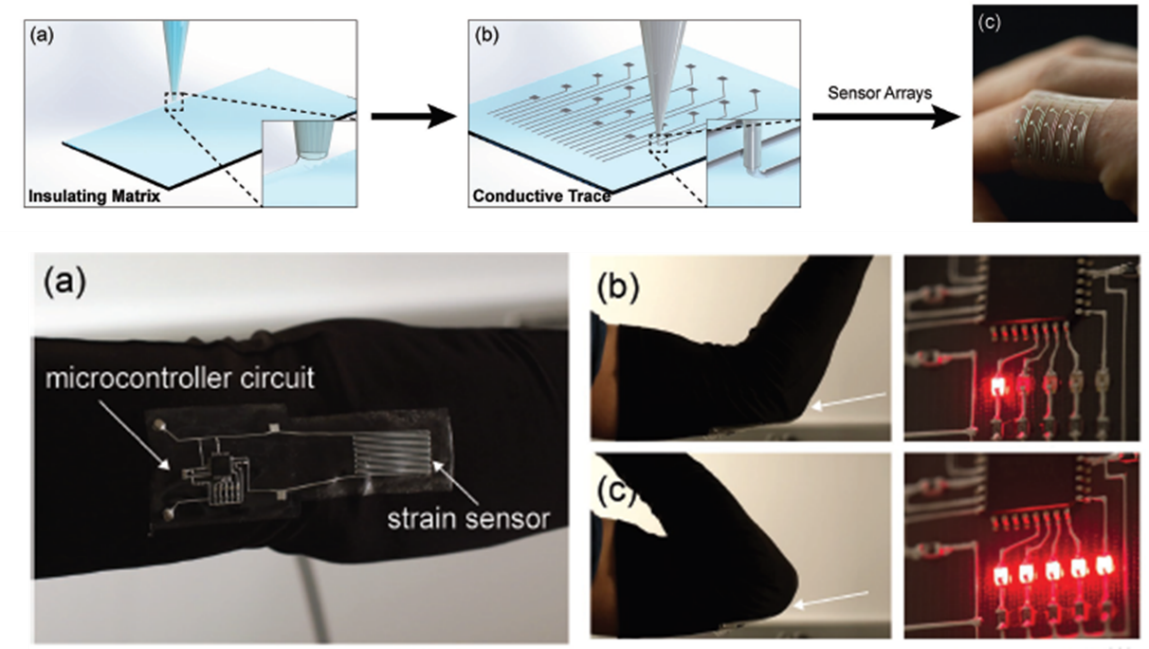Hongye Sun
- Wissenschaftlicher Mitarbeiter
- Group:
- Room:
CS 50.31 - Phone: +49 721 608-43760
- hongye sun ∂does-not-exist.kit edu
- Gotthard-Franz-Str. 3
76131 Karlsurhe
The development of flexible and stretchable electronics is boosted by the overwhelming interest and potential market growth of wearable electronics, soft robotics and biomedical devices. Additive manufacturing is capable of printing fully functional components of complex structures from simple raw materials. Fully 3D printed soft components such as sensors, integrated circuits and actuators is an attractive approach to fabricate soft electronics. Direct ink writing (DIW) has been demonstrated as a versatile 3D printing approach.
In our research, we set up a platform for the formulation of conductive/dielectric and stretchable inks and fast prototyping of soft components. Such printable and soft inks are developed based on the concept of capillary suspensions. An addition of a small portion of a secondary fluid not miscible with the bulk fluid facilitates the ink with adjustable flow properties and functionalities. Diverse mixing strategies including ball-milling or three roll milling, are followed to avoid agglomeration and clogging issues. In combination with a targeted choice of printing parameters, DIW can deliver feature sizes well below 100 micrometer. This will be demonstrated to be a versatile and applicable production line, which realizes 3D prototyping of soft components from raw materials to precisely defined complex structures.
3D printed wearable sensors for human movement monitor
- type:Bachelor-/Master thesis
- time:immediately
- tutor:
-
The development of wearable electronic devices is an emerging and exciting field in recent years. The wearable device must be soft, stretchable and mechanically conformable, which are important for interacting with human skin. 3D printing enables fast prototyping and complex design. In the age of “internet of things“, the ability to customize wearable sensors and a combination of 3D printing will lead to a new area of digital fabrication and a change of human life.
In this thesis, three types of sensor compatible with human skin will be printed via a 3D printer. Highly conductive, printable and stretchable silver composite will be used as ink. The first task is to print a wearable electronic circuit on a soft substrate. The conductivity and reliability would be tested. Then the next stage is to print a strain sensor. The sensitivity and cyclic stability will be defined. Similarly, a pressure sensor will be printed with the characterization of sensitivity and cyclic stability. After the success of these two sensors, a hybrid sensor combining strain and pressure sensor will be printed. All three sensors will be applied on a human body to demonstrate its sensibility and durability.

Figure. 3D printing platform for soft electronics and on-body test
[ Valentine et al., Advanced Materials, 2017]
